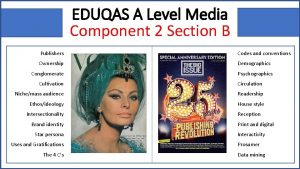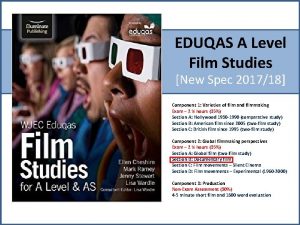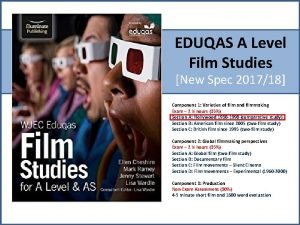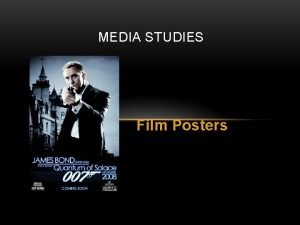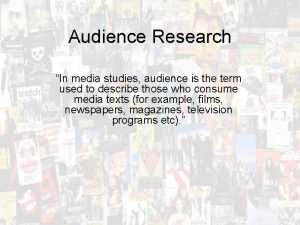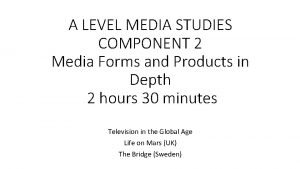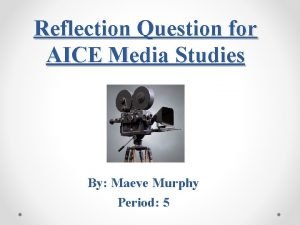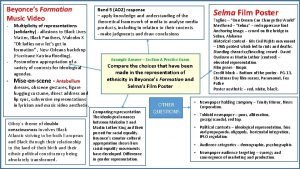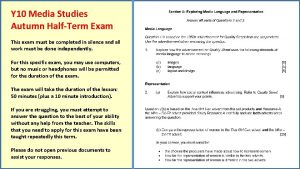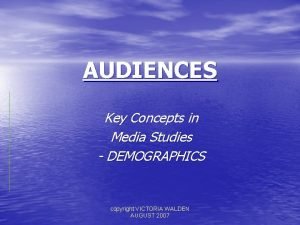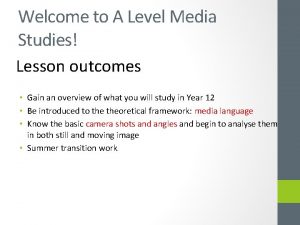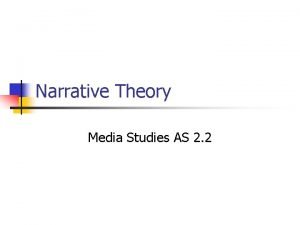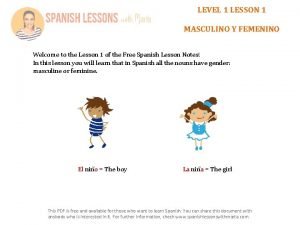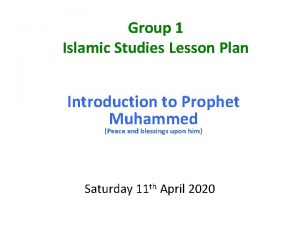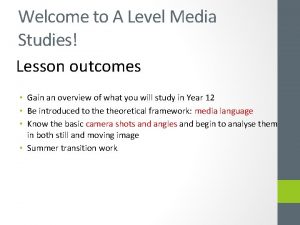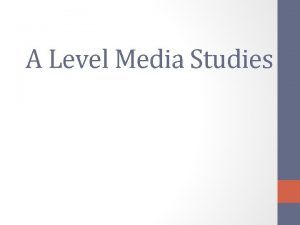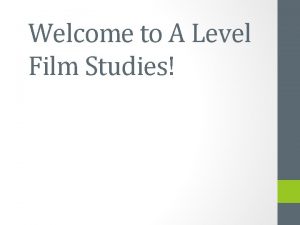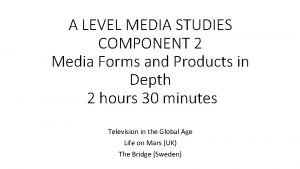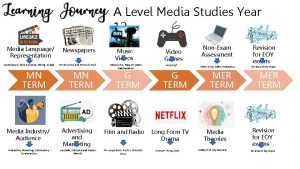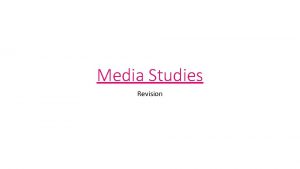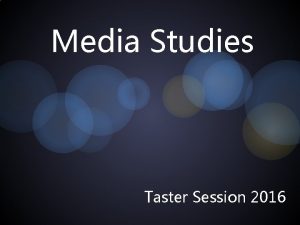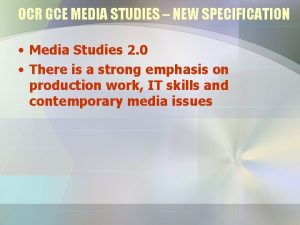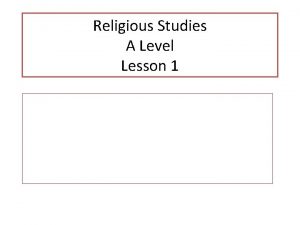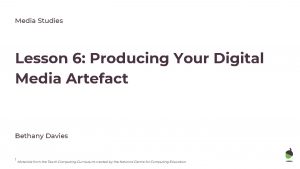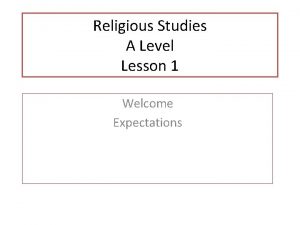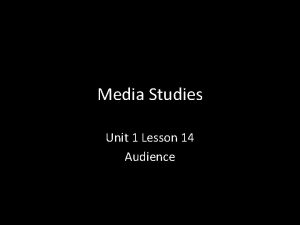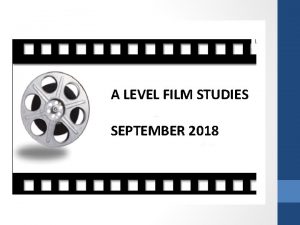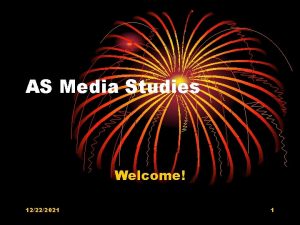Welcome to A Level Media Studies Lesson outcomes
























- Slides: 24

Welcome to A Level Media Studies! Lesson outcomes • Gain an overview of what you will study in Year 12 • Be introduced to theoretical framework: media language • Know the basic camera shots and angles and begin to analyse them in both still and moving image • Summer transition work

A Level Media Studies in Year 12

The theoretical framework • Media language • Media representations • Media audiences • Media industries This lesson you will learn about media language

Theoretical Framework – media language How the media communicates meaning through their forms, codes and conventions, and techniques Creators of media products encode messages and meanings within their products through media language, the audience then decode these messages and respond to them in different ways. You must study the following aspects of media language and be able to apply your understanding to the forms set for each exam component.

Technical Codes You must confidently be able to discuss the TECHNICAL CODES in a range of products. You must discuss and analyse the purpose and effect of the particular technique employed by the text.

Technical Codes in Moving Image Products • Camera angle/ shot/ movement and composition This lesson we will focus on camera shots and angles • Editing • Mise-en-scene • Sound

An introduction to camera shots and angles Task 1: The following slides include the main camera shots and angles. Fill in the ‘Why use it? ’ section on the handout.

High Angle

Low. Angle

Canted Angle

Establishing Shot

Close Up

Mid Shot

Long Shot

Extreme Long Shot / Wide Shot

Two shot

Aerial Shot

Point of View Shot

Over the Shoulder Shot

Extreme Close Up

Task 2: Take your own shots In pairs/ threes you will be given a camera. You have 10 minutes to construct and take 5 of the camera shots on the sheet. Extension: Before you take the picture, think carefully about showing how meaning is created. Be prepared to show some of your examples to the class.

Task 3: Analysing moving image: Watch the following advert for Wateraid (2016) -Select 3 examples of camera shots/ angles and analyse how meaning is constructed? -Write each separate example on a post-it note.

Feedback: Stick your post-its on the board. How are camera shots/ angles used in the Wateraid advert to construct meaning?

Media studies summer transition task (see handout) To be handed in to sixth form reception in September!
 Paradigm shift from women studies to gender studies
Paradigm shift from women studies to gender studies Eduqas a level media
Eduqas a level media Welcome welcome this is our christmas story
Welcome welcome this is our christmas story Film studies eduqas
Film studies eduqas Eduqas religious studies a level past papers
Eduqas religious studies a level past papers Rs gcse past papers
Rs gcse past papers A level film studies past papers
A level film studies past papers Ccea business
Ccea business Todorov narrative theory
Todorov narrative theory Media studies posters
Media studies posters Gcse media studies eduqas
Gcse media studies eduqas Audience psychographic research
Audience psychographic research Minecraft media studies
Minecraft media studies Life on mars target audience
Life on mars target audience Aice media studies final project
Aice media studies final project Beyonce formation video analysis
Beyonce formation video analysis Quality street advert media studies
Quality street advert media studies Gcse media studies past papers
Gcse media studies past papers Unit 1: media representations mark scheme
Unit 1: media representations mark scheme Demographics media studies
Demographics media studies Camera shots media studies
Camera shots media studies Barthes
Barthes Media and creative studies
Media and creative studies Welcome level 1
Welcome level 1 Islamic studies lesson plan samples
Islamic studies lesson plan samples

